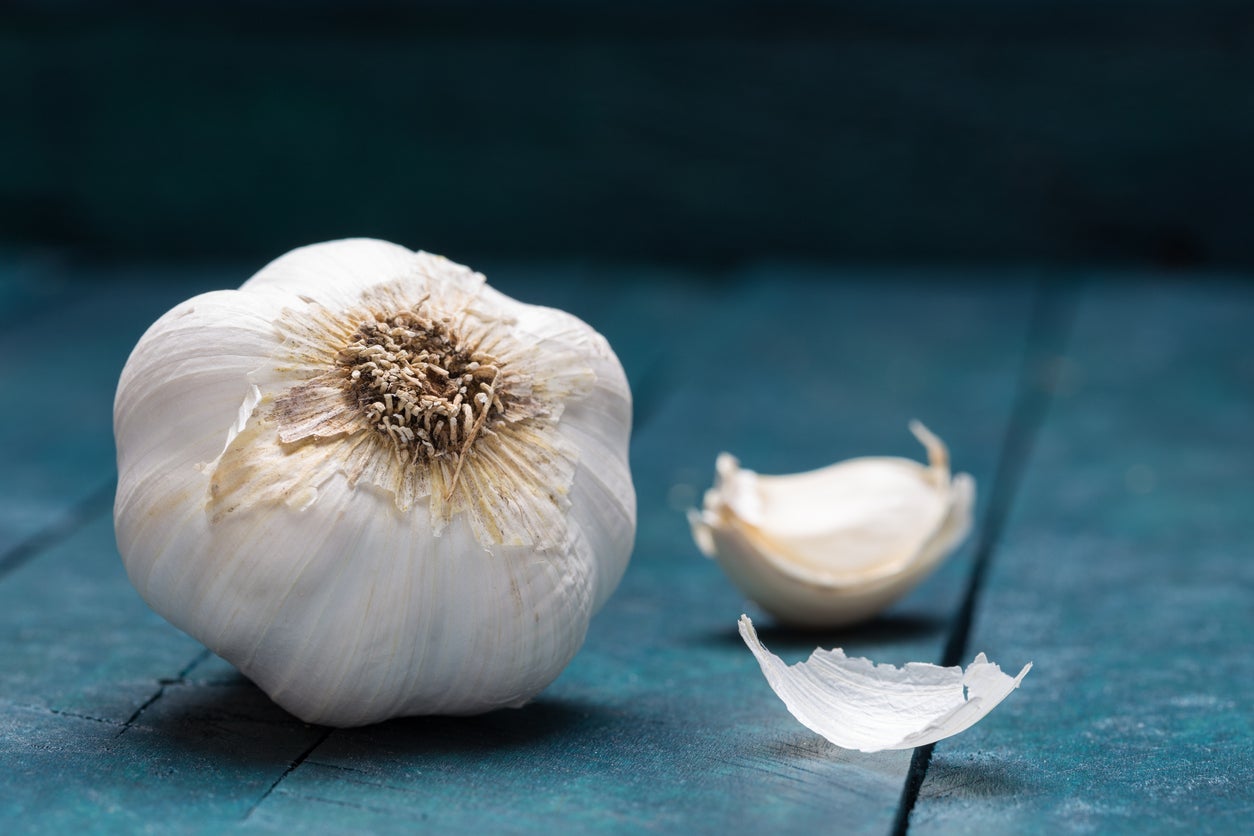Will Supermarket Garlic Grow: Growing Garlic From The Grocery Store

Almost every culture uses garlic, which means it’s pretty much indispensable in not only the pantry but in the garden as well. Even when used often, however, the cook might come upon a garlic clove that has been sitting around for too long and is now sporting a green shoot. This might lead one to wonder if you can grow store bought garlic.
Will Supermarket Garlic Grow?
Yes, store bought garlic bulbs can be used to grow garlic. In fact, growing garlic from the grocery store is a pretty handy way to go about growing your own fresh bulbs, especially if you have one in the pantry that has already begun to grow. What else would you do with it but plunk it in the dirt and see what happens?
About Planting Grocery Store Garlic
While it may seem a bit cavalier to say “plunk the clove in dirt,” the actual planting of grocery store garlic is pretty much that simple. What isn’t quite so simple is discerning what type of store bought garlic bulbs you wish to plant.
Much of the time, store bought garlic bulbs come from China and have been treated to prevent sprouting. Obviously, treated garlic can’t be grown because it won’t sprout. Also, it’s been previously treated with a chemical-- not a thumbs up for most people. Ideally, you would want to use organically grown garlic bulbs from the grocers or farmers market.
Plus, most garlic sold at the supermarket is of the softneck variety; nothing wrong with softneck garlic except that it’s not cold hardy. If you are planning to grow in zone 6 or below, it would be better to obtain some hardneck garlic to plant.
The store bought garlic can also be planted inside (or outside) to be used for its delicious edible leaves which taste like mild garlic. This is a great option for northern denizens whose climate may be too cool to grow the store bought bulbs.
Growing Garlic from the Grocery Store
While fall is the optimum time to plant garlic, it really depends on your region. Softneck garlic, the type you are most likely planting from the supermarket, needs a bit of cold to form bulbs and leaves. In cool to cold climates, it can be planted in the spring when the ground is still cold or in the coolest month of fall in milder climates.
Gardening tips, videos, info and more delivered right to your inbox!
Sign up for the Gardening Know How newsletter today and receive a free copy of our e-book "How to Grow Delicious Tomatoes".
Separate the bulb into individual cloves. Plant the cloves with the pointy end up and cover them with a couple of inches (5 cm.) of soil. Space the cloves about 3 inches (8 cm.) apart. Within three weeks or so, you should see shoots begin to form.
If your area is prone to freezing, cover the garlic bed up with some mulch to protect it but remember to remove the mulch as temps warm. Keep garlic consistently watered and weeded.
Be patient, garlic takes up to seven months to reach maturity. When the tips of the leaves start to brown, stop watering and allow the stalks to dry. Wait about two weeks and then carefully lift the garlic up from the dirt.
Garlic isn't the only store-bought plant that can be regrown. Learn more reusing, repurposing, and recycling your kitchen waste with our 5-week course on growing a no-waste kitchen, featuring social media sensation Armen Adamjan.
Love Gardening Know How? Our latest book, The Complete Guide to Vegetable Gardening, is available now!
Perfect for the gardener in your life, or for your own coffee table, this book boasts 224 pages of high-quality pictures, expert tips, and easy-to-follow advice to get your vegetable garden growing its best. Look for it at these sellers, and wherever quality books are sold.

Amy Grant has been gardening for 30 years and writing for 15. A professional chef and caterer, Amy's area of expertise is culinary gardening.
-
 Zinnias On Repeat: 10 Glorious Cut-And-Come-Again Varieties For Endless Summer Bouquets
Zinnias On Repeat: 10 Glorious Cut-And-Come-Again Varieties For Endless Summer BouquetsThese zinnia varieties keep giving all summer, making them the perfect choice for dedicated cutting gardens – or just the occasional homegrown bouquet.
By Ellen Wells
-
 Create A Romantic Garden Straight Out Of Bridgerton: Regency Era Romance In Your Garden
Create A Romantic Garden Straight Out Of Bridgerton: Regency Era Romance In Your GardenTry some romantic garden ideas straight out of Bridgerton. Flowers and gardens in the Regency era were lush and charming and you can get the same look!
By Bonnie L. Grant